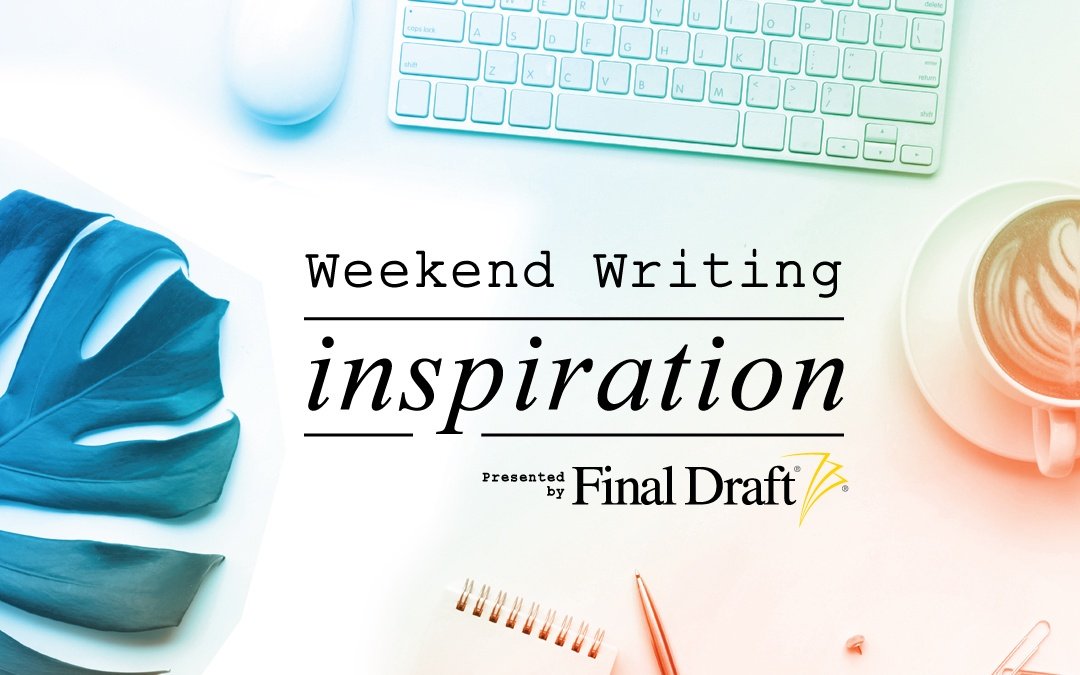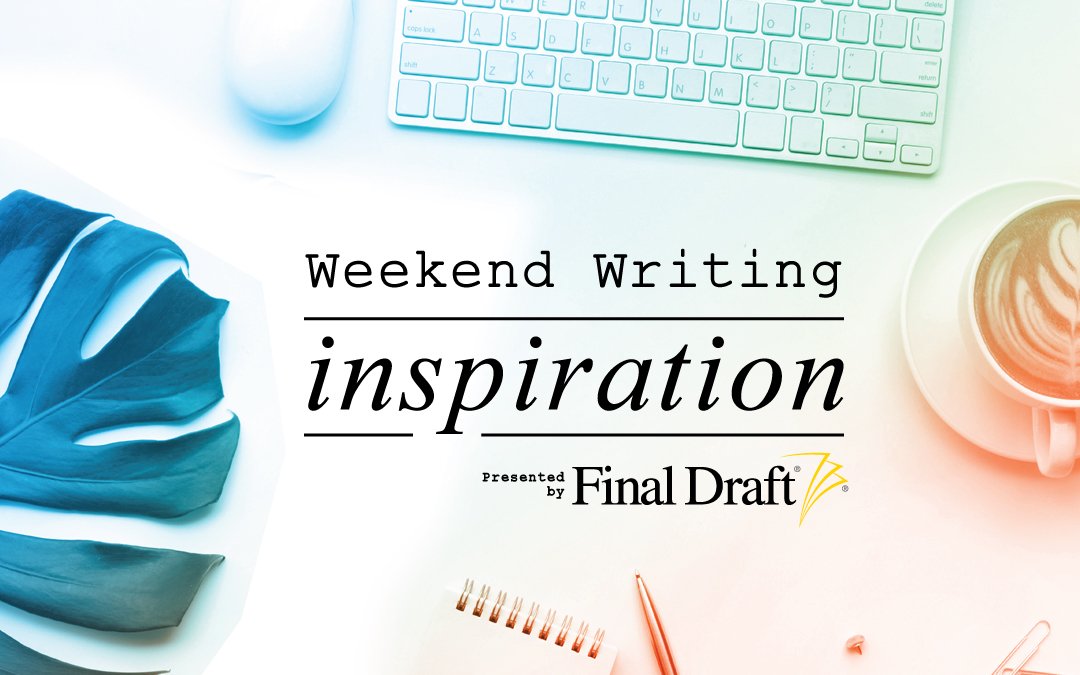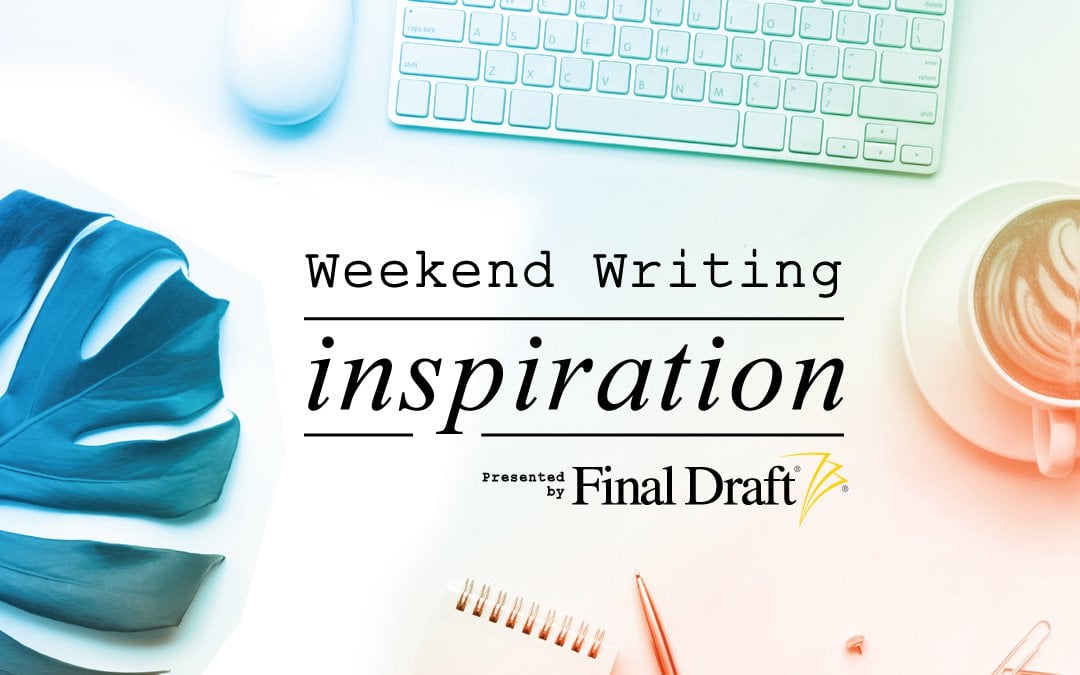Weekend Writing Inspiration: 5 Ways to Bounce Back From Writing Burnout
October 11, 2019
When you’ve been burning the midnight oil to meet a writing deadline (or multiple back-to-back deadlines), burnout won’t be far behind. Hopefully after submitting you’ll have some time to recover. And if you don’t, make sure to build more padding into your schedule for next time.
Here’s the thing: While it might work to push yourself in the short term, over the long haul getting burned out is terrible for your creativity. Long-form writing is much more of a marathon than a sprint, so you have to be able to work at a sustainable pace through the life of your career.
If you’re a younger writer, pulling all-nighters or pushing hard for a few weeks, months or even years might sound like no big deal but the cost is high in the long term, as those of us farther along the age spectrum (ahem) know. There’s only so much writing a person can do in a day, week, month or year in a sustainable way. While in general, writing begets more writing, at some point the well starts to run dry unless you’re taking great care of yourself along the way.
Once you’re feeling the burn, it’s time to invest in recovery so you can bounce back to writing as easily as possible.
Here are five ways to rebuild your creative energy and resilience when you find yourself in a place of depletion.
- Start with the basics
The first pillar of burnout recovery is the basics: Focus on your physical self-care.
Here’s how: Make sure you’re getting plenty of rest, sleep and downtime — and give yourself extra time for each of these while you’re recovering. Establish a lights-out time for yourself at night and stick to it. Plan days off and take them (and spend them wisely). Recommit to eating healthy foods and drinking lots of water to hydrate yourself (and your creative brain).
If you’ve been pushing hard, you’ve likely been neglecting exercise too, so gradually rebuilding an exercise program will help. Restorative exercise like nature walks or yoga classes are a wonderful place to start.
- Nurture your state of mind
The second pillar of burnout recovery is to take care of your state of mind. Burnout is a state of mental exhaustion as well as a physical one.
Take care of your mental health and wellbeing by writing morning pages, journaling or receiving therapy and/or coaching to help process any thoughts and feelings you have coming up around your writing and feelings of burnout.
Give thought to what you’re feeding your mind, too. Negative news? Too much social media? Gossip?
When you’re burned out, it’s useful to (even just temporarily) put yourself into a cocoon and insulate yourself from the world for a while. Make sure you’re feeding your mind with creative inputs that feel positive and inspiring to you. This is a great time to read and watch for pleasure only.
- Fill your creative well
Once you’re beginning to feel a bit like yourself again, look for ways to further fill your creative well.
Take yourself on “artist’s dates” — fun and creatively inspiring excursions. You might attend a movie or theater showing, visit a museum, go for a walk and sketch, or even hit up toy, book, comic or art stores. Whatever floats your boat. (See Julia Cameron’s book, “The Artist’s Way” for more about artist’s dates and morning pages.)
Spending time in nature is another powerful but simple way to rejuvenate and fill your creative well. Forest bathing is grounding and centering. Soaking up the negative ions next to moving bodies of water can soothe your soul. All of these are worthy investments in your creative recovery.
- Tap into your intuitive mind
When your mind is tired and you feel like you’ve run out of ideas, in addition to the creative juice you’ll get from artist dates and positive creative inputs try tapping into your intuitive mind.
One of the best things you can do to get your brain into a state of flow is to do something mundane and/or repetitive. Take a shower or go for a walk. Lie on the floor and look at the ceiling or lie on a bench or blanket outside and gaze at the trees, clouds and sky. The key here is to create situations for your mind to wander.
Another great method is to do a physically repetitive task, like getting down on your hands and knees and scrubbing the floor or the grout on the bathtub. Let your body work and your mind relax. Don’t listen to anything unless it’s an inspiring podcast or music that similarly gets your mind wandering and exploring. Getting your brain engaged in a positive way like this leads to inspiration and energy for your writing again.
- Plan ahead for next time
As you think ahead to your next steps with your writing and career, design your writing life to minimize burnout. Build a solid writing habit. Set schedules to pace yourself so you meet your deadlines on time without having to push hard at the end. Learn what your natural writing pace is and how to work through creative blocks that might be getting in your way.
In other words, aim to prevent burnout next time before it happens.
***
Your weekend writer’s assignment
If you’re dealing with burnout, create a recovery plan for yourself using the tools I’ve described to help yourself begin to bounce back. If you’re already in a great place with your writing energy, keep up the good work! Put these ideas in your back pocket to help keep your creative well full and to keep yourself on track for the future.
***
Written by: Jenna Avery
Jenna Avery is a screenwriter who specializes in sci-fi action and space fantasy, and her most recent project is a post-apocalyptic coming-of-age story for a Canadian producer-director. Jenna is also a writing coach and the founder of Called to Write, where she has helped hundreds of writers overcome procrastination, perfectionism, and resistance so they can get their writing onto the page and into the world where it belongs. Jenna writes about writing and fulfilling your creative calling at calledtowrite.com, writes for ScriptMag and Final Draft, and teaches at Script University. Download Jenna’s free guidebooks for writers, including “How to Choose Your Next Book (or Script!)” when you join her mailing list at https://www.calledtowrite.com/mailing-list- Topics:
- Discussing TV & Film




